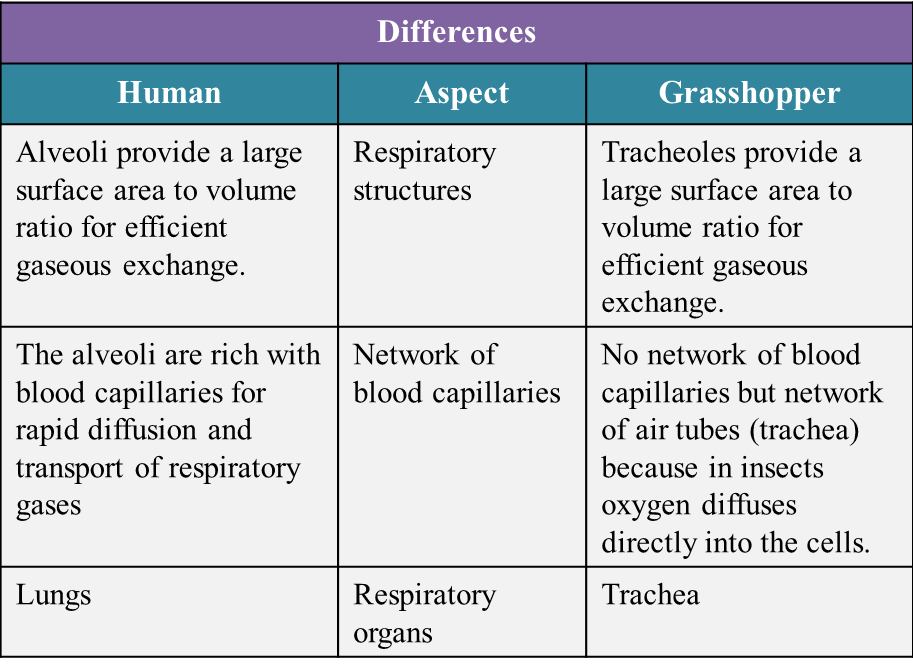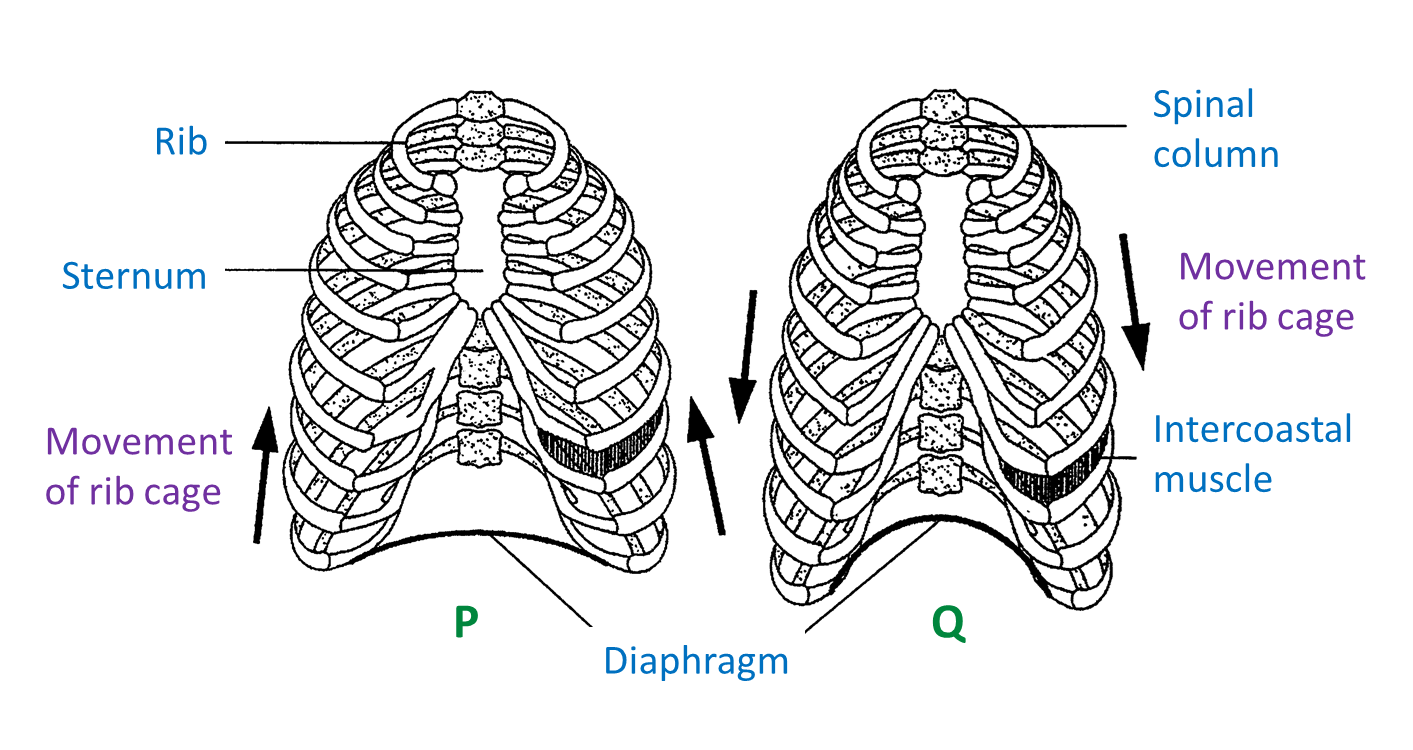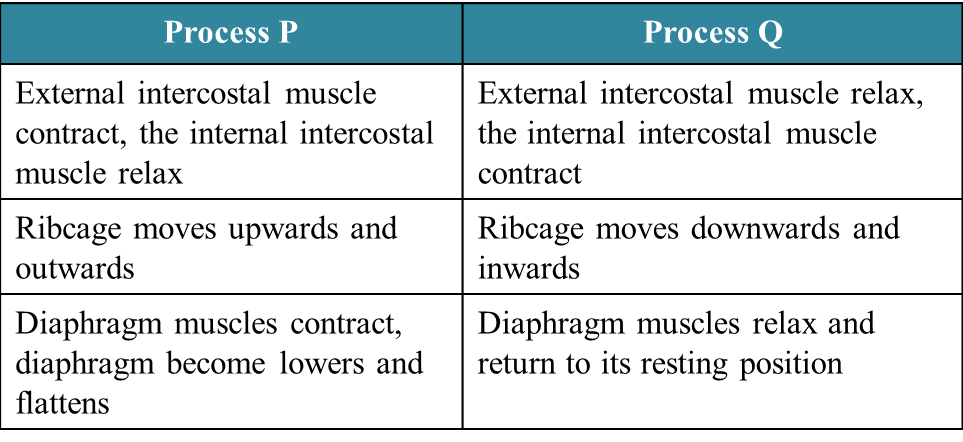(a) Sugar is oxidized during respiration.
Explain the process. (4 marks)
(b) After an athlete finished running a race, his breathing is still fast and deep for several minutes. (6 marks)
Explain why.
(c) State the similarities and differences between the human and the grasshopper’s respiratory system based on the structural adaptation to maximize the rate of gaseous exchange. (10 marks)
Answer:
(a)
– During respiration, oxygen taken in is transported by the blood circulatory system to the body cells.
– In the cells, sugar (glucose molecules) are oxidized by the oxygen to release energy in the form of ATP.
– Other products of this oxidation process are carbon dioxide and water.
(b)
– He needs to breathe in fast and deep in order to inhale more oxygen.
– This is because during running, the rate of oxygen being used by the muscles exceeds the amount of oxygen supplied by the blood.
– The muscles are in a state of oxygen deficiency.
– An oxygen debt is incurred.
– The muscles obtain the extra energy (ATP) from anaerobic respiration, because oxygen is not available.
– The excess oxygen inhaled is used by the body to oxidise the accumulated lactic acid to carbon dioxide and water.
– When all the lactic acid is removed, the oxygen debt is paid off.
(c)
Similarities:
– Both respiratory systems have structures which have a large surface area to volume ratio for efficient gaseous exchange.
– The cells that lining the respiratory structures are thin. This allows gas diffusion to take place efficiently.
– The surfaces for gaseous exchange are constantly moist because they are covered by a film of water which allows the respiratory gases to dissolve in it.

Diagram shows the conditions of the thorax during processes P and Q in breathing mechanism.

(a)(i) Name processes P and Q. [2 marks]
(ii) State three differences between processes P and Q. [3 marks]
(b) Breathing is an involuntary process controlled by the respiratory centre in medulla oblongata.
Describe what happens to the rate of respiration of a climber at the peak of a mountain. [4 marks]
(c) An athlete experiences muscle cramp during a 100 meter sprint.
Explain how the activity causes muscle cramp. [3 marks]
Answer:
(a)
P: Inhalation
Q: Exhalation
(a)(ii)
(b)
- Increased physical activity will increases the production of carbon dioxide.
- Carbon dioxide dissolves in blood plasma and increases the content of hydrogen ions blood.
- When the central chemoreceptors in the medulla oblongata detects the increases of H ions, nerve impulse are sent to the respiratory centre.
- The respiratory centre then sends nerve impulses to the intercostal muscles and diaphragm which results in breathing becomes faster.
(c)
- During a vigorous physical exercise, human muscles cells contract repeatedly and rapidly.
- Blood simply cannot supply enough oxygen for aerobic respiration and lactic acid is produced as a by-product when muscles cells carry out anaerobic respiration.
- Lactic acid is toxic and causes muscular fatigue, pain and cramps.